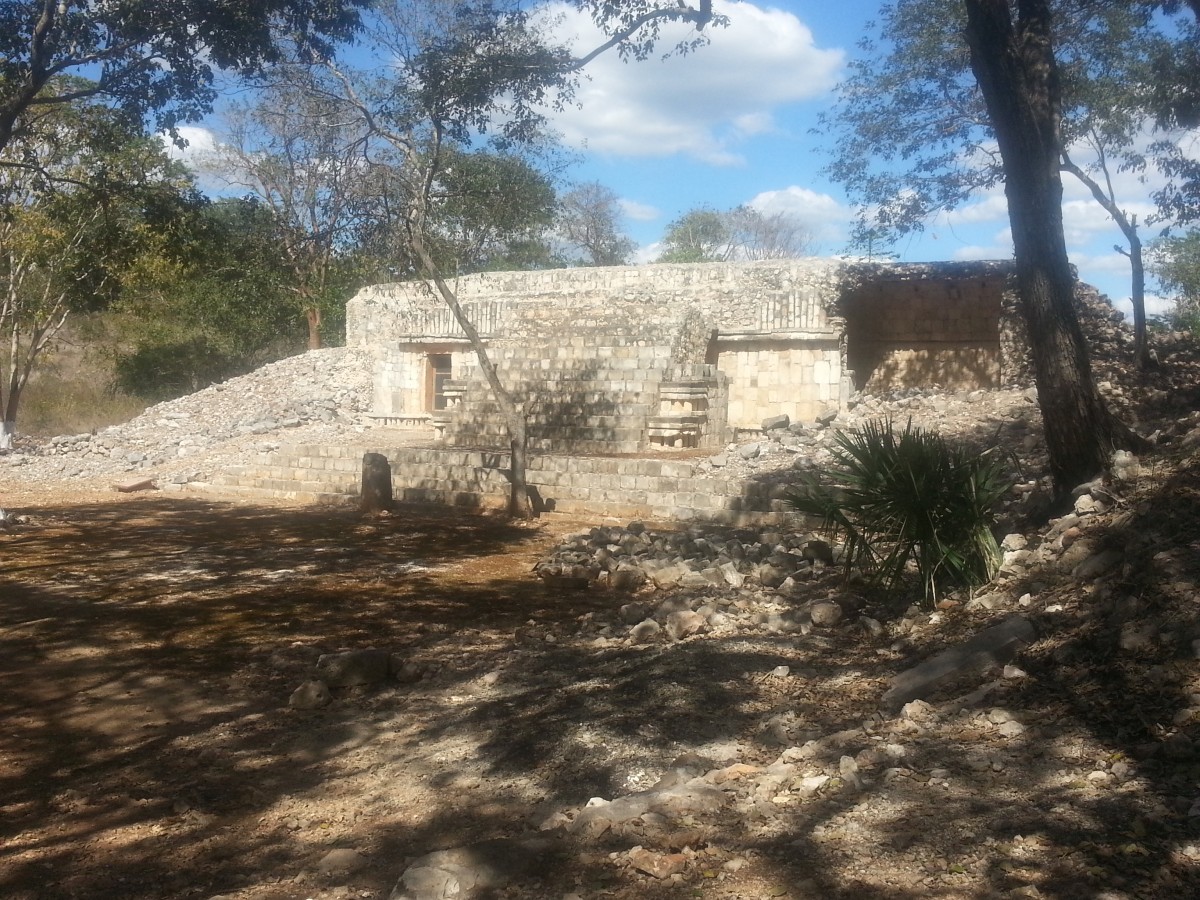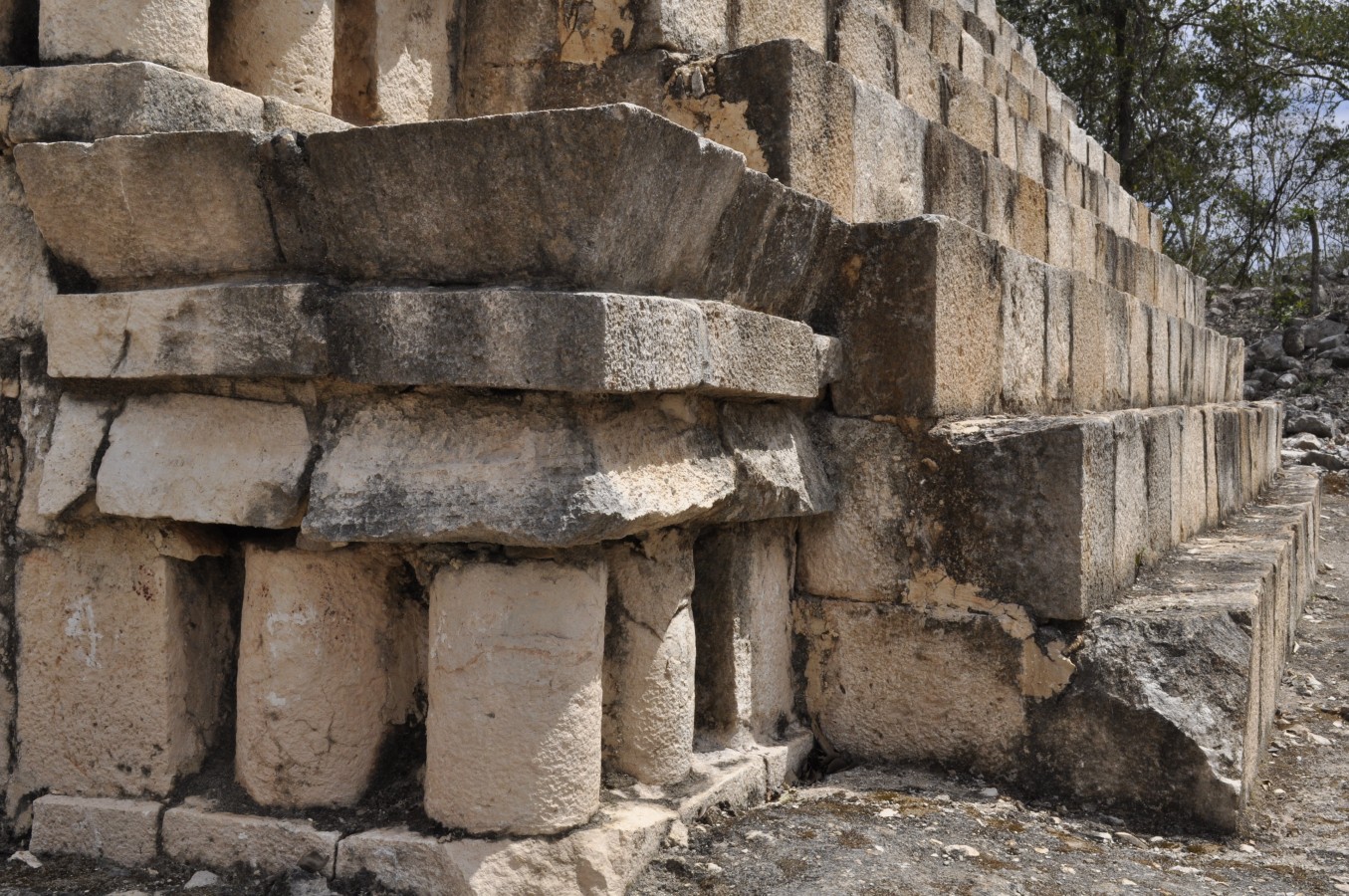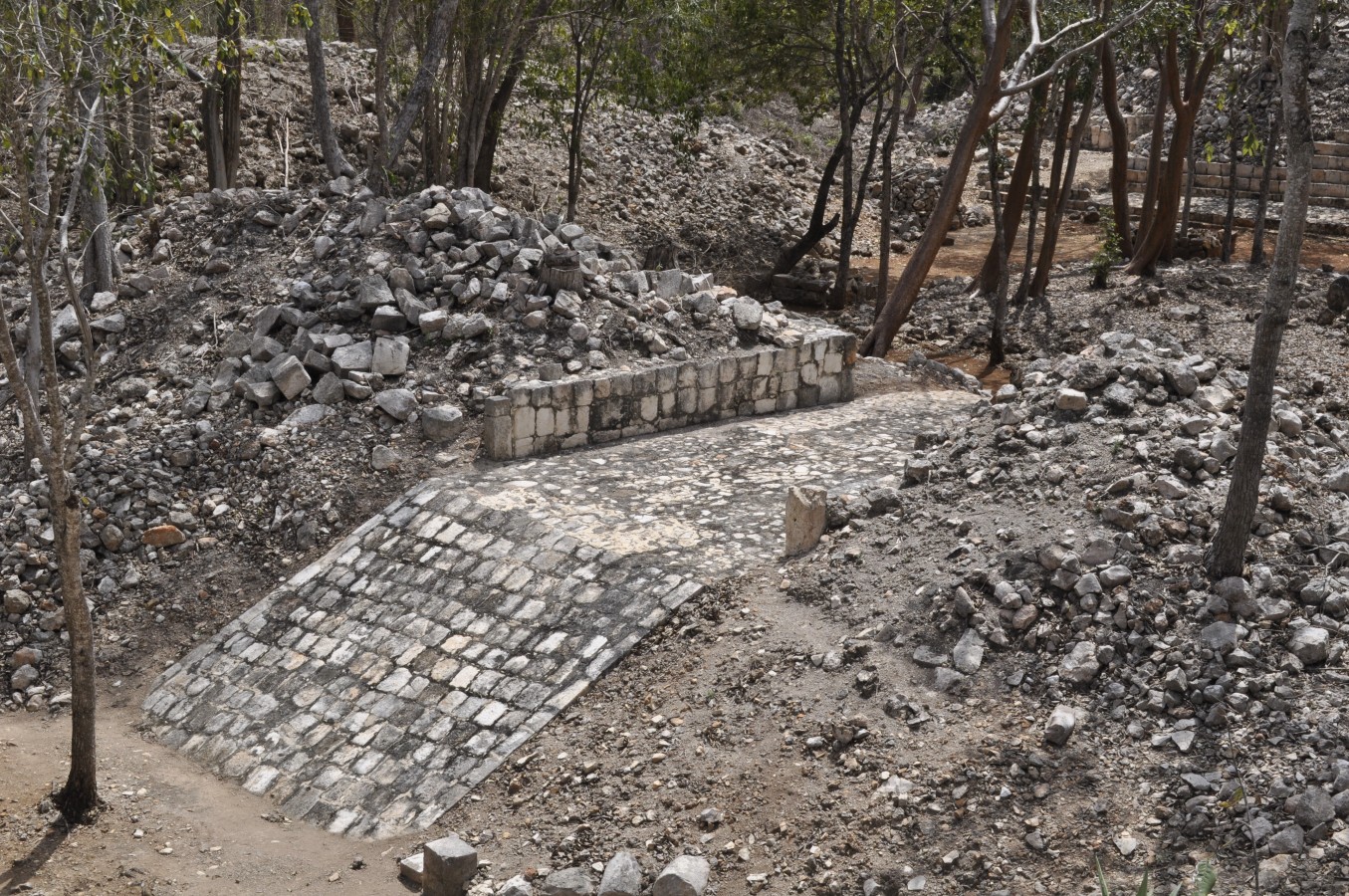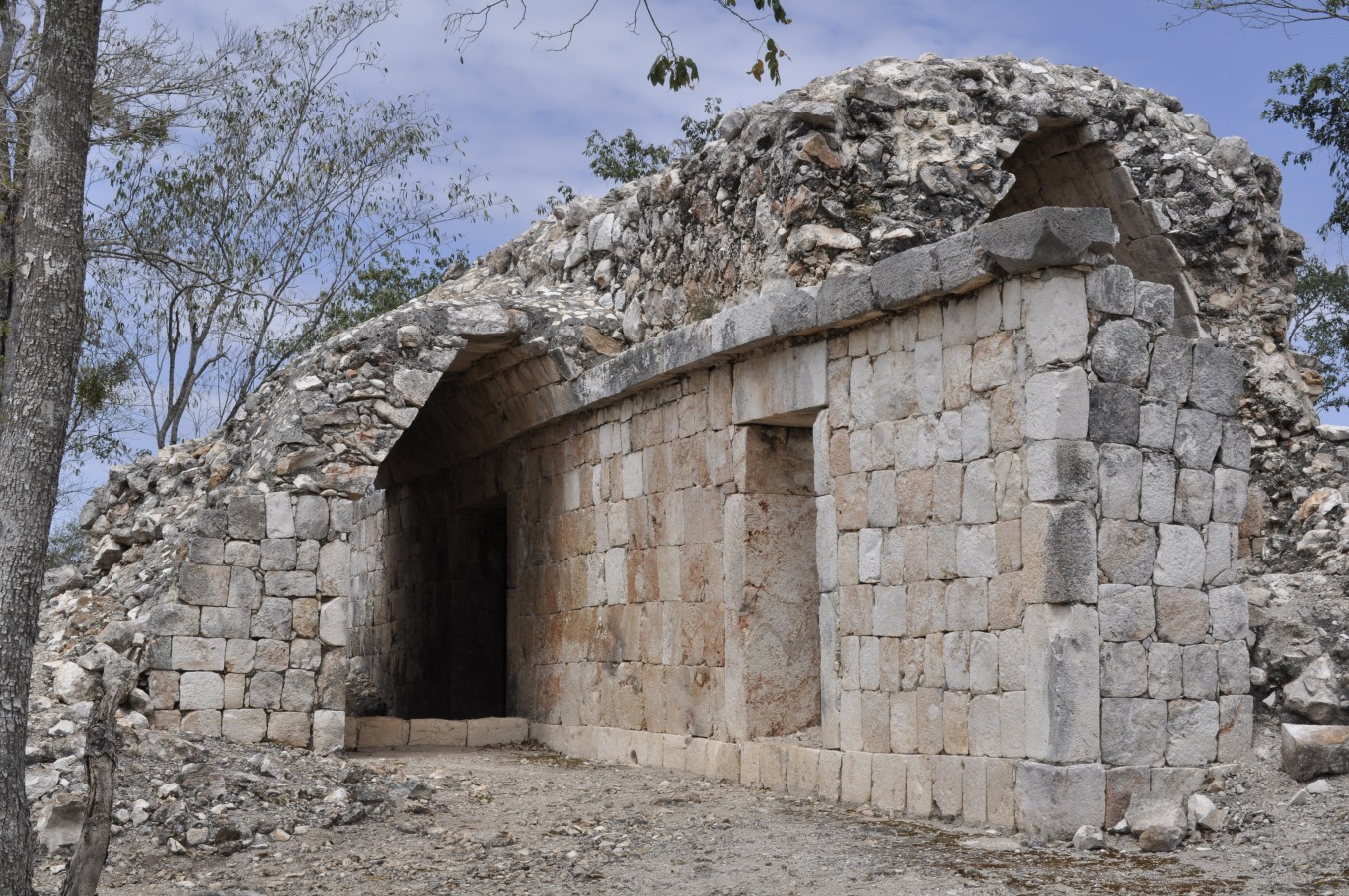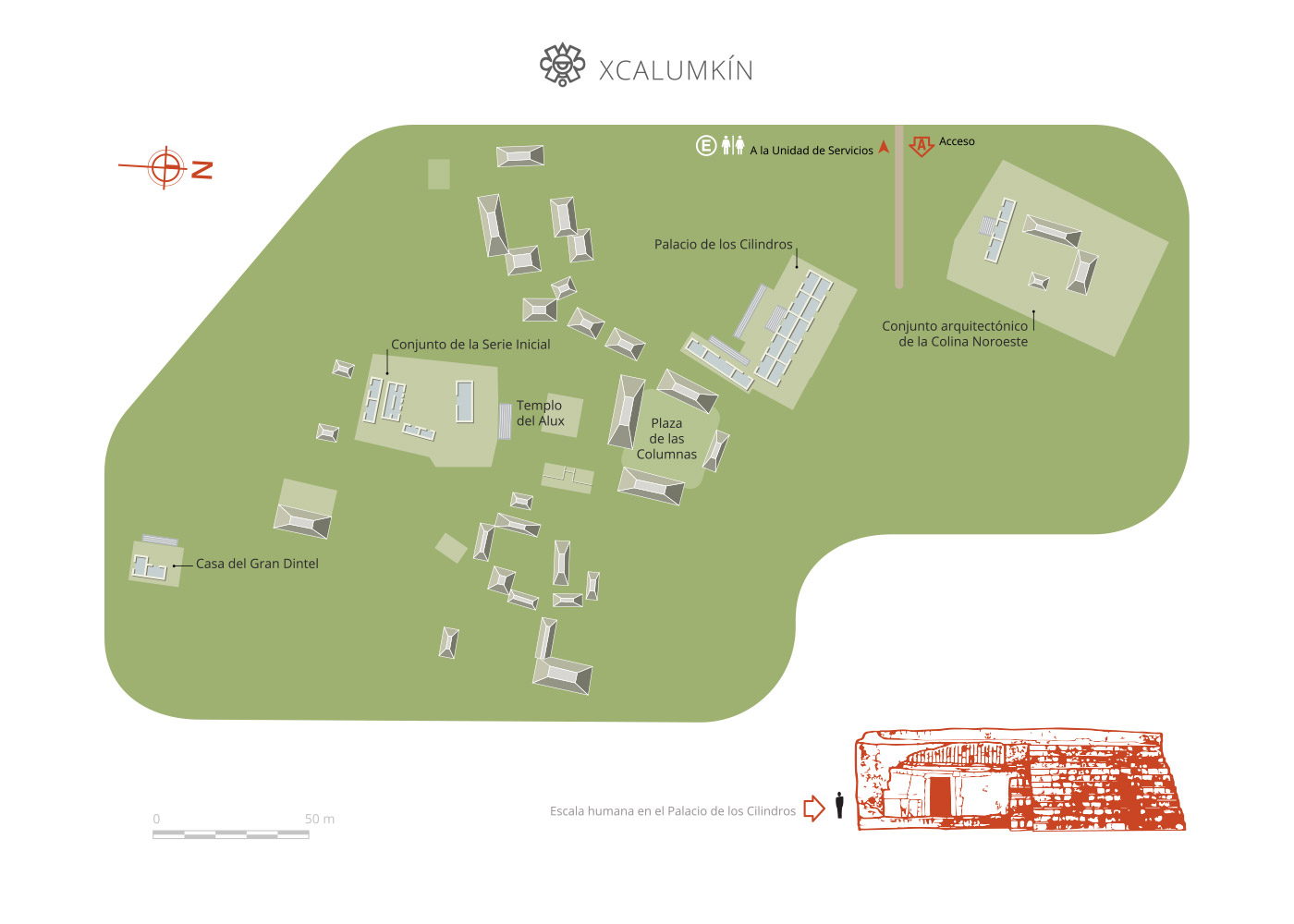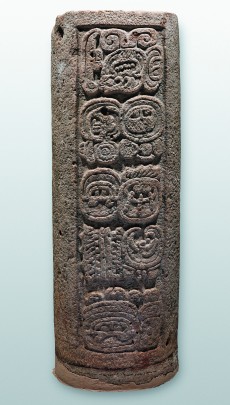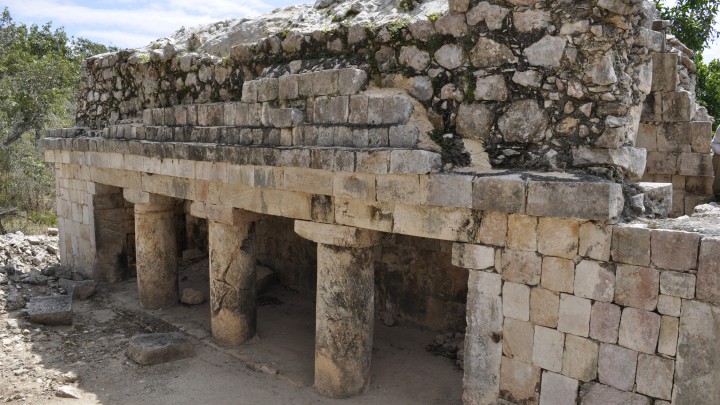Xcalumkín
Twice fertile land bathed by the sun
An outstanding 1,000-year-old Puuc site that was capital of many surrounding settlements. It only has a few temples and palace structures, and no ball court, but Xcalumkin has an impressive number of hieroglyphic inscriptions about its rulers and other lower-ranked figures.
About the site
This zone is considered to be of great importance due to its monumental architecture and profusion of interconnected hieroglyphic inscriptions. The remains of this pre-Hispanic settlement cover an area of almost four square miles. The ancient coastal city of Jaina is 31 miles from the archeological site of Xcalumkin, hence Jaina’s emblematic glyphs recorded in some of the texts found on the site; this is due to the fact that the ancient inhabitants of Xcalumkin remained in close contact with the coastal city, especially during the eighth century. The earliest date found refers to 728 AD, and the latest 761 AD, confirming less than 40 years of written history; in other words, only two generations. Nevertheless, the inscriptions refer to more personages than could realistically have lived during such a short period because evidence reveals 14 names of different individuals, unlike in the glyphs found in the Petén, where the name of the sovereign K’ul Ahau (sacred lord) is frequently repeated. However, in Xcalumkin the distribution of names is almost equal, without any standing out as a supreme authority. However, sahal is the most frequently used honorific in Xcalumkin, and in other local sites, and refers to lesser dignitaries or lords subordinate to an Ahau or regional governor. Other titles deciphered in Xcalumkin include: its’at (wise man), mats (educated man), ah ts’ib (scribe) and ah kin (priest).
Map
Did you know...
- Tixcalomkin is mentioned in the Chilam Balam of Chumayel, indicating that the toponym originated in pre-Hispanic times.
- There are around 250 hieroglyphic texts which are inscribed in various places, such as on jambs, lintels, columns and moldings.
- The deciphering of the hieroglyphs, using epigraphic methods, has improved our understanding of the political relationships, both within the site and on a regional level.
An expert point of view

Antonio Benavides Castillo
Centro INAH Campeche
Practical information
Monday to Sunday from 09:00 to 17:00 hrs.
Free entry
Se localiza a 85 km al noreste de la ciudad de Campeche.
Services
-
+52 (981) 816 8179
-
This email address is being protected from spambots. You need JavaScript enabled to view it.
-
FACEBOOK
-
TWITTER
Directory
Encargada de Operación de Zonas Arqueológicas del Centro INAH Campeche
This email address is being protected from spambots. You need JavaScript enabled to view it.
+52 (981) 816 911, exts. 138016 y 138017


